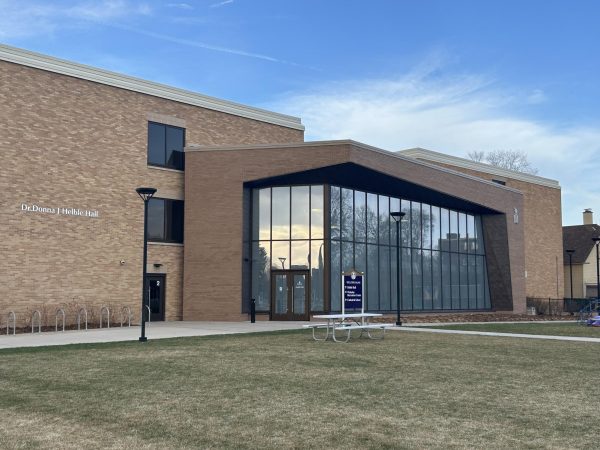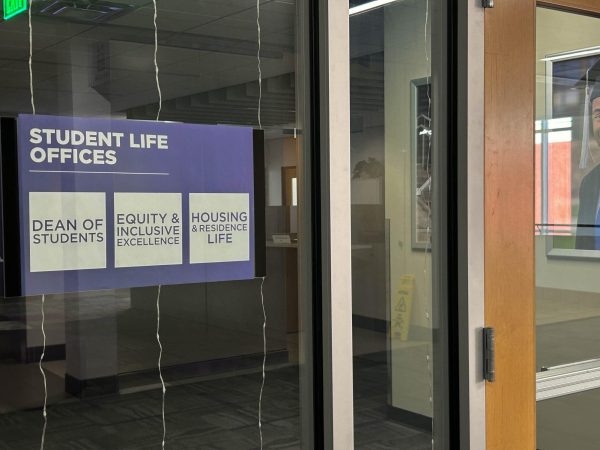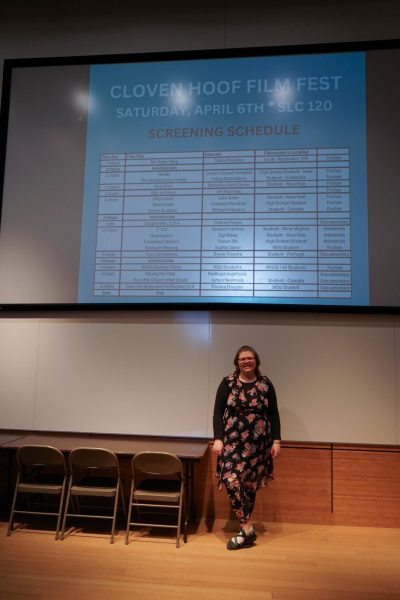Faculty raises concerns over budget
November 20, 2019
One month after the Oct. 22 budget forum regarding Winona State University’s increasing budget deficit, faculty members continue to have questions and concerns.
The university announced its $1.6 million budget deficit for this school year with an email announcement in September, with projections of an even worse deficit for next year.
Chief financial officer Scott Ellinghuysen has since released informational emails to faculty and the student body and conducted a public budget forum.
Weeks after the budget forum, uncertainty regarding the worsening deficit continued, as did faculty concerns regarding their job security and ability to offer a stable student experience at Winona State.
During the Oct. 22 forum, Allison Quam, an associate professor in the library, noticed that a graph shown during Ellinghuysen’s presentation seemed to depict a large rise in employees despite a decrease in student enrollment over the last couple of years.
The graph showed an enrollment decline of 18 percent since its peak of 8,544 students in 2012, with current enrollment sitting near 7,000.
Full-time employee hires increased steadily from 2011 through 2017, having only declined 3 percent since its 2017 peak of 960 employees.
Quam asked about the rise in employees towards the end of the forum.
“I look at [the rise in employees] and think, ‘where are they? Certainly not in the library,’” Quam said.
Quam went on to question what the university’s priorities were regarding employment and student enrollment, as many departments felt they had lost more employees than they had gained.
President Olson said he did not know where those hired throughout the increase had gone, in terms of positions in what departments, and that it was a “good question” for administration to look into.
Nearly a month later, Ellinghuysen says the human resources department is “looking into” Quam’s inquiry.
Ellinghuysen said that after HR finishes their reports on the faculty and staff in each department, they will be posted on the Winona State budget website.
He also said that the graph was perceived incorrectly by some.
Ellinghuysen explained that employee numbers have actually been decreasing the last couple of years, but while enrollment was going up years ago, employment did as well. Then, after enrollment began its downward trend, employment mainly flatlined, creating the large gap between the two.
“Part of the challenge is, ‘what is that magic number?’” Ellinghuysen said. “What should that number be, we don’t really know.”
President Olson said at the budget forum that faculty and staff layoffs were something the university would completely avoid if possible, as they have previously done during budget situations like this.
“I mean, we’re just trying to make the point on a large scale, it looks like we should have fewer employees,” Ellinghuysen said. “Where? We’re not sure.”
Although the employee vs. student enrollment graph may have been read incorrectly by some, it still sparked conversation about a troubling fact: many departments were already struggling with a lack of staff before the deficit was announced.
Now, each department must cut their budgets, and for many, this could include faculty.
Quam shared that while the library has been able to keep their library faculty, they have lost two to three full-time library technicians already.
Administration has asked each department to reduce their budget by 3-5%, which translates to $90,000- $160,000 for the library.
The library also has to cut an additional $30,000 to cover for their material expenses.
Quam explained that a large part of the library’s budget is spent on subscriptions to journals and databases, many of which are needed by students to use in course curriculums.
Due to inflation, the price of those subscriptions already goes up 5-7% every year.
The library had anticipated this situation, according to Quam, and had previously asked and advocated for continued funding for collections.
They will have no choice but to lose subscriptions to many databases and journals, which will most likely affect the class curriculums of many departments.
It is now a question of whether or not students will have to personally pay for subscriptions to necessary materials, or if faculty members will take out parts of their curriculums altogether due to the loss.
“Other departments don’t have materials like that [to cut] as far as I know,” Quam said. “Their budget is mostly people, as far as I know.”
Every department must cut their budgets to help cover the growing deficit, including the president’s office, but each have varying amounts to cut.
Current budget scenarios A, B and C project budget reductions between $3 million to $5 million.
The academic affairs portion of the budget, including all of the colleges, the library, etc., takes up 73.1% of the budget. From that, the college of liberal arts, nursing and health sciences, and science and engineering require the most of that budget.
The college of liberal arts faces to lose the most.
In the worst-case scenario of the university instilling a $5 million budget reduction, the College of Liberal Arts would lose nearly $1 million.
“The biggest issue that has hurt us so far is our number of faculty,” said Tanya Ryan, chairperson of the mass communications department. “When I started here in 2008, I think we had eleven [faculty members] – we have eight now.”
Ryan explained that while there were once more majors offered in mass communication than are offered today, the department is still one of the largest in the liberal arts college.
“We can barely teach required courses for all of the students to graduate,” Ryan said.
She explained that the department has had faculty members retire and their positions never filled, and with this year’s retirement of staff person Ellen Severson, all of her duties fell onto the rest of the mass communications faculty.
Ryan also said that the department had been looking to hire a full time, tenured position last year, but that offer was changed to just a nine-month position. Because of that, most of the candidates dropped out, and the department was not able to hire anyone for the position.
Ryan said the department is currently under the impression there is not enough money to hire an adjunct instructor to teach courses, so some professors are currently teaching an overload of courses.
Ryan said that while professors get paid for teaching an overload, they really have no choice, because otherwise those required classes could not be offered.
“If I can’t teach the course that the students need to graduate, either they’re going to change majors, leave [Winona State] or they’re not happy and are here even longer,” Ryan explained. “It’s not a win-win.”
She also said that there may not be enough money to continue paying professors for teaching overloads.
Ryan also said that at this point, the department has cut nearly everything that can be cut from the budget.
“We’re already scraping by,” Ryan said.
Both Ryan and Quam said they assume other departments and parts of the university are facing similar situations.
Ellinghuysen said that no area is having an easy time with deciding what will be cut from their budgets.





































































